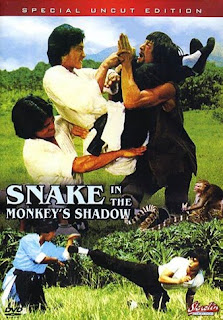A week past now, we were thinking on the power of
Bitches Brew. Something about 40 years brought us back. From there we travelled a dusty road to S
onny Sharrock. The next fork took us to
Wayne Shorter's
super new, then back, as you might expect, first to
Bitches Brew and then to its precursors. We say ancient to future, and it is paths like this we represent. The crossroad where the past crosses itself with the new and the new crosses with the past.
Here we fell down on our knees, the weight of the pondering upon us. Gazing in all directions we heard an echo, from the time before Miles plugged in, and the time when, after Miles plugged in, he and his fraternal twin brother Wayne, decided to part.
We offer this clip for your own pondering.
The brothers laid the tracks down once together in June 1967* as ensemble pieces. It's the great Columbia quintet on these tracks, and they are in fine form. The compositions, all Shorter's, are developed as relaxed duet melodies, played by both brothers in unison, and long solos developed over Tony Williams' steady glide, and Ron Carter's reminder that there is beat that holds it all together.
The later versions were laid down in August 1969, as Miles and Wayne were in the middle of
Bitches Brew, and though the musicians walk across from the one session to the other, the tracks on
Super Nova are Wayne's tracks. They are the tracks of a single leader, separated from his brother. He's switched from tenor to soprano. The band is no longer the standard quintet, but a rhythm heavy line up w/ two guitarists,
Jack Dejohnette (who rocks the house whenever he find the place), and additional percussion (
Chick Corea on drums?).
The separation is not complete. The brothers play together into the early 70s. Wayne describes the motivation as shared: Well, I had a time limit for myself in a sense. Five years with a band -- like with Art Blakey -- that's enough. With Miles it was a little more than five years... Miles was saying [whispers]: 'Don't you think it's time for you to get your own band?' And I had so many ideas, and the music was coming out like water and everything, and I said, 'Yeah. I think it's time. I think it's really time.'"† But the separation is underway.
Listen:
- "Water Babies," Wayne Shorter (ss), John McLaughlin (ac-g, el-g), Sonny Sharrock (el-g), Miroslav Vitous (b), Chick Corea (d, vib), Jack DeJohnette (d, per). August 29, 1969.
- "Water Babies," Miles Davis (tp), Wayne Shorter (ts), Herbie Hancock (p), Ron Carter (b), Tony Williams (d). June 7, 1967
- "Capricorn," Wayne Shorter (ss), John McLaughlin (ac-g, el-g), Sonny Sharrock (el-g), Miroslav Vitous (b), Chick Corea (d, vib), Jack DeJohnette (d, per). August 29, 1969.
- "Capricorn," Miles Davis (tp), Wayne Shorter (ts), Herbie Hancock (p), Ron Carter (b), Tony Williams (d). June 13, 1967
- "Sweet Pea," Wayne Shorter (ss), John McLaughlin (ac-g, el-g), Sonny Sharrock (el-g), Miroslav Vitous (b), Chick Corea (d, vib), Jack DeJohnette (d, per). August 29, 1969.
- "Sweet Pea," Miles Davis (tp), Wayne Shorter (ts), Herbie Hancock (p), Ron Carter (b), Tony Williams (d). June 23, 1967
We approach September 26, the feast of the twins. The loa remind us that the twins are the most ancient, and tricky, and that they have power over water and healing, as well as separation and reunity.
After Wayne left Miles, they both had plenty of 'splaining to do, as much to themselves as any. One of the ways Wayne tells the story is
here,† and perhaps the most noteworthy portion is doubled down over @
the red light. Miles worked heavily between conjuring muses and conjuring doubles, before and after his work with Wayne.
After listening and pondering at this crossroads we think we should prepare to consult the jumeaux and ask their help. We walk in separation from so much more than our lost brothers. We want their aid with those blues.
* We have much respect for the brovahs @ the Jazz Discography Project for making the chronology of an era more visible to mere mortals.
† Wayne Shorter is usually generous in his interviews, and this one is along those lines.







.gif)


%2B%5BDVDRip.Dual%5D.Sirimiri.avi_002135600.jpeg)












